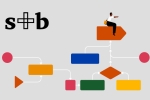What are data mesh and data fabric? Data mesh is a data ownership framework that allows organisations to maintain a decentralized data architecture while uniting disparate datasets from across business domains under a centrally managed data-sharing and governance arrangement. Data fabric is an architecture that ensures data on any platform from any location can be effectively combined, accessed, and shared.
“These are key approaches in effective data modernization, supporting efficient management of an ever-expanding data ecosystem, improving access for end users while also upholding security, controls, and governance,” says John Simmons, a principal with PwC US focused on data & analytics technologies.
What business problems can they address?
“As part of ongoing data modernization efforts, organizations are constantly collecting, analyzing, and processing ever-larger amounts and types of data, which needs to be processed in a timely and efficient way and made available to a wider range of business decision-makers and end users,” says Anil Nagaraj, a principal with PwC US specialising in data analytics. “This requires robust, efficient, and secure data architectures that are capable of democratizing access to data and helping lighten the workload of an organization’s data teams.”
Both data mesh and data fabric can help eliminate duplication of workloads and facilitate interoperability and data democratization, which makes data more discoverable and accessible to a broad range of users within an organization. These benefits are critical to data modernization efforts as organizations seek to become data-driven and to maximize the benefits of AI.
With data mesh, each domain owns and manages its own data pipelines, controlling areas such as accessibility and formatting. This approach facilitates self-service use of data across an organization while allowing each business unit to process, store, and control its data. At the same time, a common governance framework promotes stronger data security, compliance, and governance practices across domain teams. This ensures data meets both internal standards for interoperability and external data security regulations.
Data fabric, meanwhile, pulls together data from legacy systems to provide a unified and consistent view of an organization’s data. This creates fluidity between different datasets, facilitating data movement, transformation, and integration, and overall management and governance. Compared with data mesh, data fabric provides a simpler and more integrated way of managing, processing, and analzsing data. Data can be accessed and analyzed in real time, at any time and from any location, which makes processing and analysis more scalable.
In practice, data fabric can complement data mesh, as it stitches together various environments to provide a unified view of data and help make new connections between datasets.
How do they create value?
Data mesh and data fabric reduce the prevalence of operational bottlenecks sometimes associated with centralized data architectures. This gives users faster access to data, which speeds up decision-making and boosts business agility.
For example, because each domain owns and managed its own data pipelines, data is usually collected in real-time, as opposed to using batch processing in more centralized models. Real-time collection typically relies on cloud platforms and can (with the right cloud strategy) provide a more accurate view of storage needs, resulting in lower overall costs and improved budgeting and resource allocation.
The integrated and streamlined structure of data fabric saves time and money by eliminating the need to administer multiple data management solutions. A streamlined and integrated data management platform—combining storage, compute, and governance/quality control processes—can also deliver greater business insight, foster innovation, and reduce time to market for projects based on data from multiple sources.
Who should be paying attention?
Both of these data modernization approaches can be relevant for any industry, with CIOs, CTOs, and chief digital officers needing to work closely with data teams to understand what’s needed for most effective deployment. R&D and product development teams, as well as marketing departments, can also get significant benefits from these approaches—though legal and compliance departments need to be closely involved in any rollout.
How can businesses prepare?
“The approach you take to data modernization needs to be aligned with desired business outcomes and data governance culture,” says Bret Greenstein, a PwC US principal focused on data, analytics, and artificial intelligence. “The first step is to identify and define different areas of the business, evaluate data needs, and assess both why each stands to benefit and what they hope to achieve.”
To initiate a mesh or fabric approach, organizations should test the water with one or two data products involving one area of the business. These products should be selected according to how critical they are to the business and their potential to deliver value; PwC’s GenAI value realization flywheel can aid this decision.
Learn more
- PwC US: ERP data modernization is the key to digital business transformation
- Amazon Web Services: Fusing Business Data with an Enterprise Data Solution for a Unified Data Strategy
- CIO: What is data architecture? A framework for managing data
- Gartner: How Data Fabric Can Optimize Data Delivery
- PwC Global: AI, data and tech
Last updated on May 20, 2025
Contact us

Global Chief AI Officer for the PwC Network of Firms, PwC United States
Tel: +1 215-704-0372













